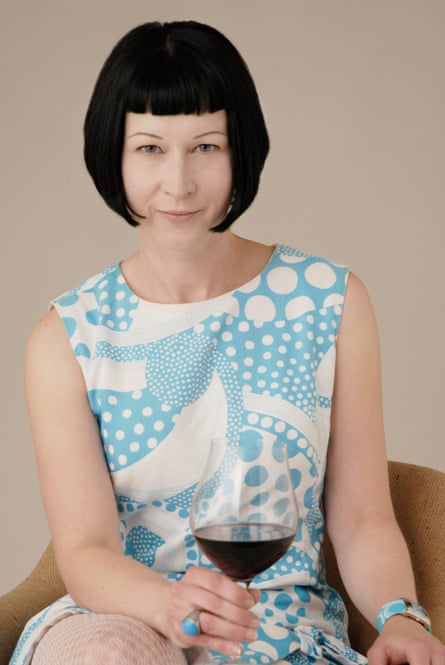I’m sitting in a sterile sound-controlled basement. In front of me stand two large glasses, two bottles of vino – one red, one white – and a serious set of speakers.
This may not be the most conducive setting to scoff wine. But I’m here for a very important scientific experiment: to find out if what we listen to affects what we taste. Or, to put it more simply, what melodies must one match with a pinot noir?
That’s a question sonic artist and wine critic Jo Burzynska has spent years exploring. This week her workshop on pairing wine and music runs at the World Science Festival Brisbane – and I’m getting a sneak preview.
The format goes like this: drink wine. Listen to music. Write notes. We start with total hush as a “controlled taste”. “The main thing to do is just to pay attention,” instructs Burzynska. “A lot of people just drink wine and don’t taste it.”
After being told to slurp down my Jules Taylor sauvignon blanc noisily (a technique that fans air across the tongue, taking aromas up into your nose), – I jot down some words.
First, there’s silence: “Floral, gooseberries, a herbal smell, musk,” I consider.
Second, I listen to the chirpy, happy, upbeat Just Can’t Get Enough by Nouvelle Vague: “More sweetness, sherbet, less musk,” go my notes.
Third, we hear the aggressive, post-punk band Skeptics and their controversial song AFFCO: “Acidic, cloying, more claustrophobic … ??” I query.
Finally, “Lost for words, feels like an exam … ” I scrawl.
Tasting the wines, I worry I’ll get it wrong – what happens if my palate isn’t up to scratch? I wonder if the distinctions I have picked up are more to do with the fact that I’m searching for differences, willing them into effect.

But Burzynska – who writes her own notes simultaneously – has similar experiences to me. Acidity and sweetness is associated with higher pitches; base brings out the body; and bitterness is connected with lower pitches. (Experiments done with toffee have found similar effects).
Then there’s the emotional mood of the wine and the power of association. Our sav blanc is, according to Burzynska, “summery, lighthearted, upbeat”. Just Can’t Get Enough’s carefree tone seems to speak to the grape.
This may all sound like airy-fairy gloss (with ample opportunity for brand marketing). But the last half-decade has seen an explosion in research of what is termed modulating taste or “sonic seasoning”.
Foodies are taking note, capitalising on a desire to surrender to their senses in the iPhone era. Heston Blumenthal was a pioneer when he first asked diners to listen to waves crashing while eating his seafood dish Sound of the Sea in the late 1990s. The single-table restaurant Ultraviolet in Shanghai uses surround sound as part of a technology-driven multisensory eating experience.
Burzynska herself set up the world’s first “oenosthetic” wine and sound bar in Christchurch’s the Auricle Sonic Arts Gallery in 2014 (it has since closed). A soundtrack would be specifically chosen to complement the drinks on offer – and if you wanted to buck the trend and get a full-bodied red anyway? “It came with warning,” laughs Burzynska, wagging her finger: “This will not go with the music!”

“[Research] in the development of noninvasive brain imaging has confirmed that the senses are interconnected,” says Burzynska, who is doing a PhD on the subject. Exactly why, we don’t know. But Professor Charles Spence, of Oxford University’s Crossmodal Research Laboratory, heralds sound as the forgotten flavour sense. (His work has been critiqued as “atheoretical, trivial, and epiphenomenal” by Neil Martin, a psychologist and a specialist in human olfaction and taste.)
Back in our closeted room, I reach for the pinot. Unable to find the perfect match, Burzynska has composed her own piece of music, Signature Pinot Noir, in partnership with Crown Range Cellar. As we both drink the liquid, resonant with hints of chocolate and black cherry, a fecundity of cello strings mixed with the silvery falsetto of birdsong washes over us.
The legato melody brings out the pinot’s “silken texture”, says Burzynska. “[This wine has] some rich, sweet fruit … I thought that probably needs something like a cello – the timbre would go well with the body.
“But it also has a really nice acidity, a freshness, and that gets picked up by high pitches. So the birds were there to pick up the acidity – I have found those higher pitches can also bring out the aromatics.”
She stops drinking. “I think the time is right for people to reconnect with their senses.” Plus, she adds with a grin, “there’s plenty of fun to be had”.

Comments (…)
Sign in or create your Guardian account to join the discussion